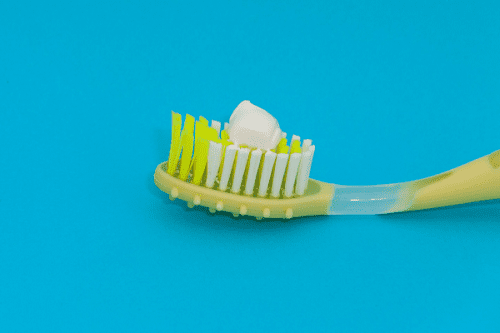
This article has been provided for use by the Australian Dental Association and the original article can be found here.
A toothpaste is made up of many ingredients, each with their own purpose. Read below about the different ingredients and their purposes.
Surfactants
Surfactants provide foam during brushing. This helps to spread the toothpaste in the mouth. They also have a detergent action that also breaks up dental plaque and loosens any sticky food particles that are attached to the teeth. As well, surfactants reduce the growth of bacteria in the mouth.
Commonly used surfactants include sodium lauryl sulfate (SLS), cocamidopropyl betaine and sodium methyl cocoyl taurate (adinol). Sometimes a combination of surfactants are used.
Toothpastes for young children may be made to foam less, compared to toothpastes made for adults.
Abrasive agents
Most of the cleaning action during toothbrushing comes from the abrasive particles included in the toothpaste, which physically remove stains on the surfaces of teeth.
Examples of abrasives included in toothpastes include calcium carbonate, calcium phosphate salts, alumina, silica, and magnesium carbonate.
Thickening agents
Also known as binders, thickeners are added to achieve the desired paste consistency and to prevent ingredients from separating. They include mineral colloids, natural gums (e.g. xanthan gum), seaweed colloids (e.g. carrageenan) or synthetic cellulose. Without a binder present, the toothpaste would separate into a liquid and a solid that would need to be mixed before use.
Flavours
A range of flavours are used, such as spearmint or peppermint. These can give breath-freshening benefits. Mint flavours are always used together with a non-sugar sweetener, such as xylitol, sucralose, or sodium saccharin, to balance the taste of the main flavour.
Humectants
Humectants help to retain water within toothpaste, which stops the paste drying out. Ingredients such as glycerol and sorbitol perform this role. They also contribute to the overall flavour, and together with some added water help to hold the other ingredients together in a paste or gel form.
Solvents
Water is included as a solvent or carrier for other ingredients of the toothpaste. This makes the toothpaste flowable and hydrates the thickening agents. The combination of water and the humectant makes up approximately 75% of the volume of toothpaste.
Buffers
These ingredients are added to stop the toothpaste from being acidic, which could negatively affect the teeth. Examples of buffers include trisodium phosphate, sodium citrate, sodium hydroxide and pyrophosphates.
Colour
Ingredients such as titanium dioxide make toothpaste appear white in colour. Some toothpaste contain food colours to give them a special colour.
Fluoride
Fluoride is the key ingredient included in toothpaste to help prevent tooth decay.
There are three types of fluorides you may see listed on toothpaste tubes. These include sodium monofluorophosphate (MFP), sodium fluoride (NaF) and stannous fluoride (SnF2).
Toothpaste designed for children aged 18 months to 6 years usually has 500 parts per million (ppm) of fluoride present. Toothpastes for children 6+ years and adults will usually have 1000 or 1450 ppm of fluoride.
Hydroxyapatite
Hydroxyapatite is the main mineral component of tooth enamel. In some toothpastes, hydroxyapatite is included as a source of calcium, to help repair tooth structure. It can be used with fluoride, or by itself. This is a relatively new concept, and more research is required to know how effective this is when used over a long period of time.
Tooth sensitivity
Ingredients that help to treat tooth sensitivity work by two main methods.
- The nerves in the teeth are soothed so they are not triggered by stimuli like cold.
- A barrier is created over the sensitive area, which stops it from responding to stimuli.
Ingredients included in desensitizing toothpastes include potassium nitrate, arginine and calcium carbonate, strontium chloride, stannous fluoride, and calcium sodium phosphosilicate.
Calculus (tartar) control
Calculus, sometimes referred to as tartar, can build up on the surface of the teeth. When dental plaque is not cleaned away, excess minerals found in the saliva enter the plaque and cause it to calcify (harden), creating calculus. Calculus cannot be removed from the teeth with a toothbrush and must be removed by a dental practitioner who performs a professional cleaning of the teeth, known as a scale and clean.
Ingredients such as pyrophosphates, zinc citrate and sodium hexametaphosphate can help to reduce the build-up of calculus.
Teeth whitening
Some toothpastes include sodium hexametaphosphate, which can repel stains from the surface of teeth.
Hydrogen peroxide is added to toothpastes that aim to lighten the colour of teeth, at levels from 1 to 3%.
Phthalimidoperoxycaproic acid, more easily referred to as PAP, is another ingredient that can be found in toothpastes aimed at whitening teeth. This is organic peroxide that acts like a bleaching agent.
